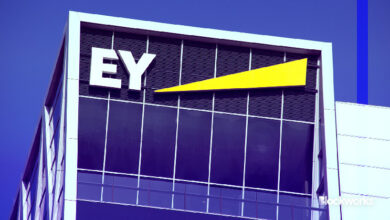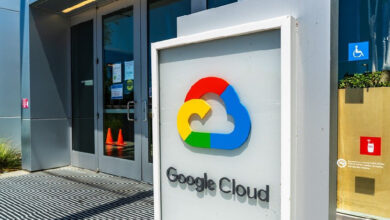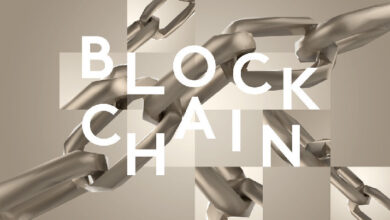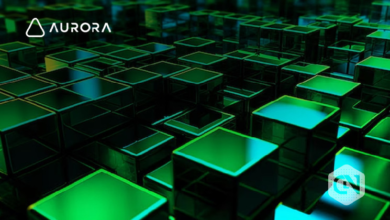Sony & Microsoft urge the adoption of Blockchain technology

Gaming giants Sony and Microsoft have been actively incorporating Blockchain technology into their operations. Their moves marked a crucial development with the potential to reshape the gaming industry and, with that, the mainstream adoption of Blockchain.
Many are questioning whether their undertaking will succeed when so many have failed before. According to CoinGecko, over 75% of all Blockchain games launched in the last five years have been discontinued. Only 690 out of 2,817 games launched between 2018 and 2023 have a somewhat active player base.
Now, Sony and Microsoft’s recent moves are expected to be the key to making Blockchain gaming a mainstream possibility. There is a potential for the next-gen Xbox or PlayStation.
Sony and Microsoft’s Blockchain initiatives
Sony has filed a patent for transferring digital assets between PlayStation titles using Blockchain, which means that assets do not have to be locked in individual games.
It has also allowed the tokenizing of in-game assets, allowing secondary market trading between players. Furthermore, Sony even mentioned that the “NFT could be used cross-generationally…from PS4 to PS5.”
The patent also considered compatibility with rival gaming consoles like Xbox or even cloud-based games, which means gaming assets may transcend console boundaries soon. All kinds of in-game items like skins, trophies, and progress could be accessible together in the future metaverse ecosystem.
Meanwhile, Microsoft plans to integrate crypto wallets into Xbox to enable secure asset trading across platforms, as leaked documents show. Their strategic goals, including acquiring Activision Blizzard and Savage Game Studios, suggest a serious commitment to expanding their gaming presence with Blockchain.
The leaked document also mentioned a “crypto wallet” feature, which hints at possible in-game asset transfers like Sony’s. It still remains a question whether the wallet would be native to Microsoft or adopted from third-party providers like Coinbase or MetaMask.
Lastly, the report also mentioned that Microsoft plans to support AI and machine learning in the future, aiming to attain “super-resolution” game graphics.
Market opportunities for Blockchain gaming
Despite the lack of Blockchain-based consoles, a lot of Blockchain games exist, like Axie Infinity. There are also many games powered by crypto payments, like Ethereum and Binance coin. The cryptocurrency blog often discusses the increasing adoption of cryptocurrency in mainstream gaming.
With Blockchain gaming becoming more popular in the market, it’s no wonder that Sony and Microsoft are turning their heads.
The Blockchain gaming market presents a significant opportunity, with estimates of potential growth exceeding 10% by 2025. The industry’s total market CAGR is expected to gain 2.9% from 2020-2025, with the market expected to grow to US$206.4 billion by 2025.
Key drivers for this include the rise of play-to-earn games, increasing demand for immersive gaming experiences, and growing Blockchain adoption by developers and publishers.
The traditional gaming industry relies on revenue from sales, in-game purchases, and subscriptions. Meanwhile, Blockchain offers unique properties by providing true ownership of in-game assets. This creates new revenue streams for players and creators and ensures transparent and secure game economies.
Both Sony and Microsoft are known to be industry leaders with cutting-edge technology. Drawing parallels with Sony’s success in popularizing Blu-ray, the inclusion of Blockchain in gaming consoles could serve as a catalyst for mass adoption, potentially transforming the way games are designed, played, and monetized.
There has been high interest in adopting Blockchain and metaverse into the gaming world. Sony and Microsoft are not the first to explore nascent technology in their gaming product.
Meta released Oculus Quest 2, a wireless VR headset known for its standalone capabilities, meaning it doesn’t require a connected PC or console.
There’s HTC’s Vive Pro 2, a premium VR headset designed to connect to a powerful gaming PC geared towards users who prioritize top-tier VR experiences. For both these products, however, cost and accessibility remain barriers.
There are lower-cost alternatives, such as Cubios Inc’s WOWCube, a portable console with a physical twistable design; Atari’s VCS, a modern console inspired by the classic Atari 2600 that functions both as a console and a PC; and Anbernic RG552, a handheld gaming device pre-loaded with games from NES, SNES, and Sega Genesis.
These offer cutting-edge gaming experiences at an affordable price point but with several compromises.
With the limited options on our hands, it is understandable how many are interested in seeing how Sony and Microsoft will join the stage with their new consoles.





